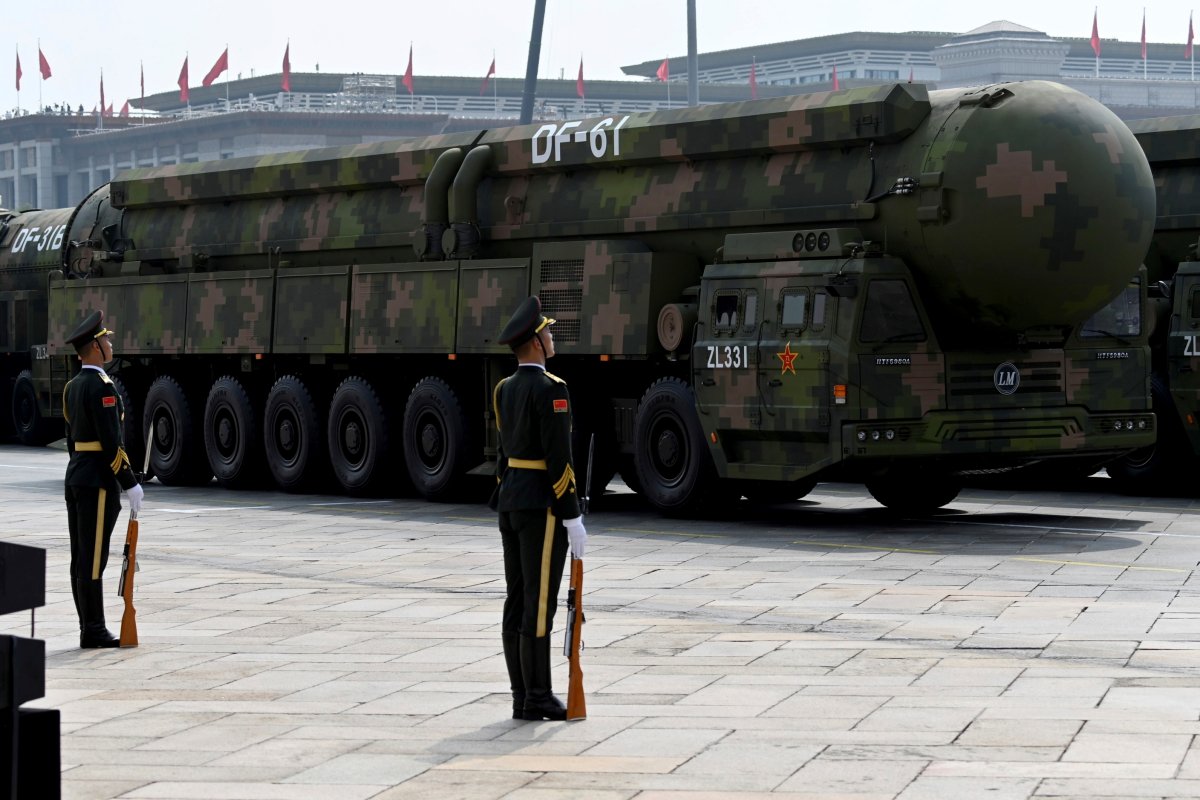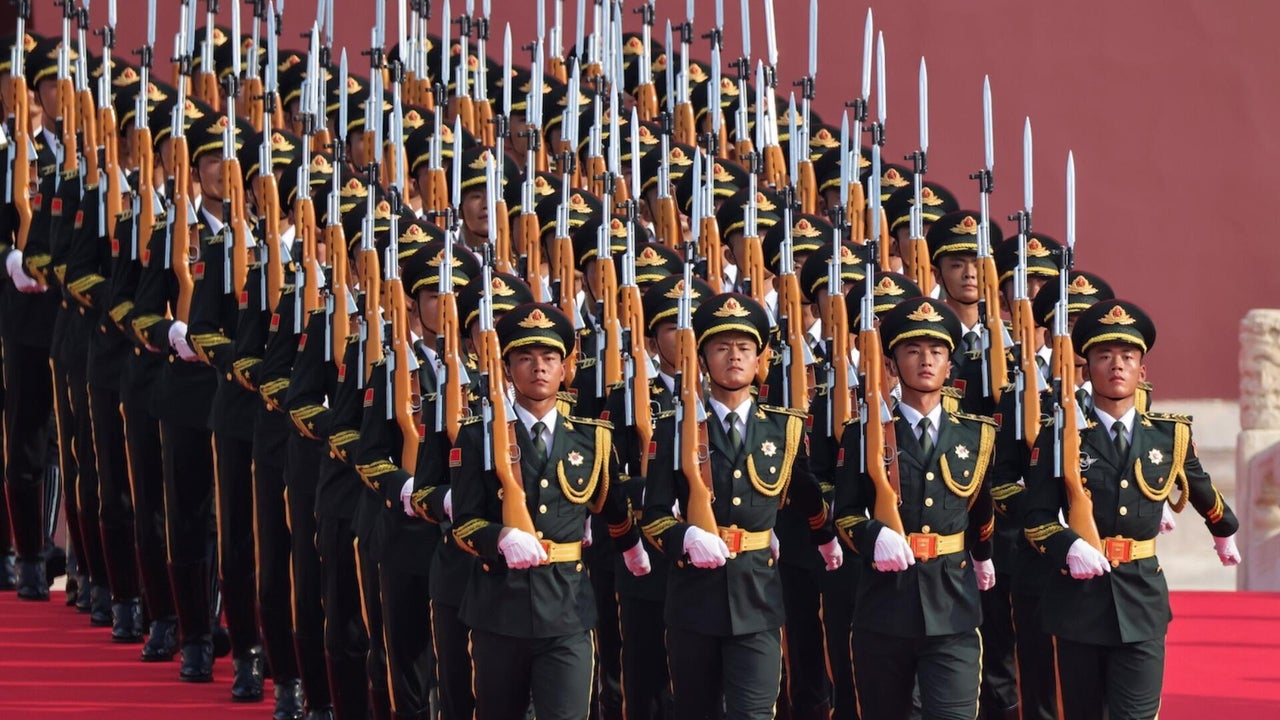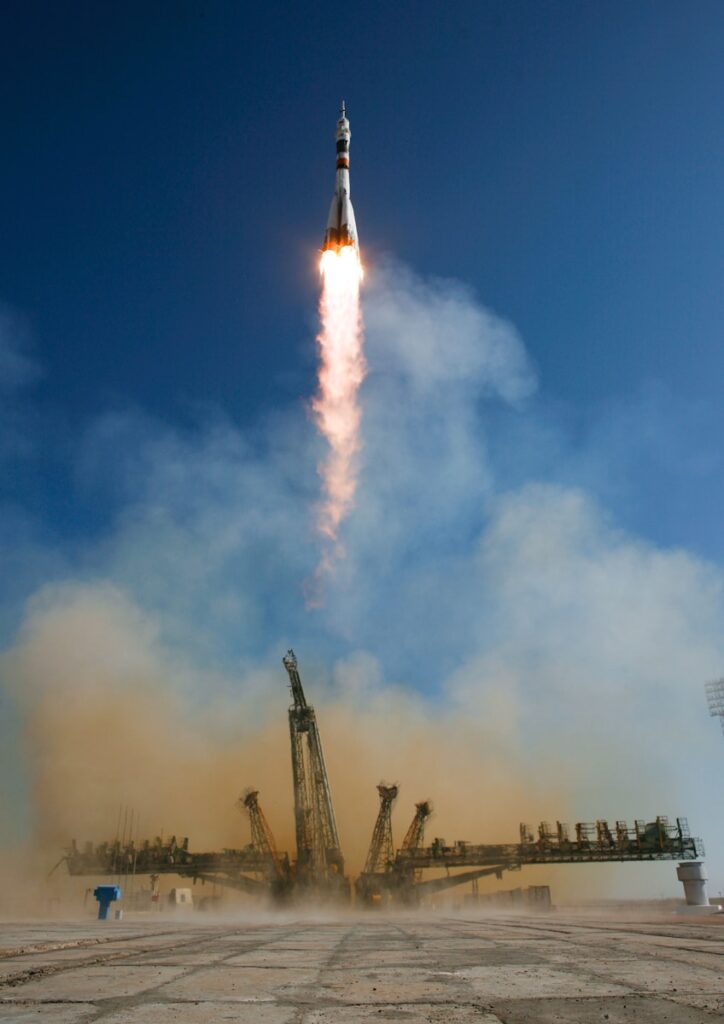
Beijing’s central thoroughfare, the Avenue of Eternal Peace, recently bore witness to a formidable display of military might, a parade ostensibly commemorating the 80th anniversary of victory over Japan and the end of World War II. However, the sheer volume and technological sophistication of the hardware on display suggested a purpose far grander than mere historical remembrance. This was, by all accounts, a deliberately fearsome presentation of weaponry, designed to project President Xi Jinping’s vision of a new world order, one where China stands at the apex, backed by high-tech arms that, in many instances, appear to be ahead of its rivals.
The 90-minute showcase was meticulously choreographed, with countless soldiers, sailors, and airmen marching in near-perfect unison, flanked by intercontinental ballistic missiles, tanks, and stealth planes. While the visuals were undeniably startling, the true significance lies beneath the surface—in the capabilities revealed, the industrial capacity demonstrated, and the subtle yet potent messages conveyed to both domestic and international audiences. This event served as a critical lens through which to assess the People’s Liberation Army’s (PLA) rapid modernization and China’s burgeoning global stature.
What truly emerged from this grand assembly was a comprehensive picture of China’s advancements across various domains of modern warfare, from strategic deterrence to futuristic combat systems. While the immediate post-parade attention often gravitates towards the most visually striking elements, a deeper analysis reveals a concerted strategy to enhance China’s military capabilities and project its power. Here, we delve into some of the most critical takeaways concerning the PLA’s advanced weaponry and the nation’s unparalleled industrial capacity, setting the stage for understanding Beijing’s ambitions.

1. **DF-61 Intercontinental Ballistic Missile (ICBM) and Advanced Strategic Missiles** The parade prominently featured the DF-61, a colossal intercontinental ballistic missile (ICBM) transported on an eight-axle truck, marking it as the PLA Rocket Force’s first new ICBM since the DF-41’s debut in a 2019 military parade. This weapon signifies a substantial upgrade in China’s land-based strategic deterrent capabilities, underscoring its continuous commitment to modernizing its long-range strike options. Its deployment indicates a sophisticated advancement in missile technology, allowing for enhanced mobility and survivability compared to fixed silo-based systems.
Further reinforcing China’s strategic arsenal, the JL-3, a new third-generation submarine-based ICBM, made its first appearance, demonstrating Beijing’s progression towards a robust sea-based nuclear deterrence. The exhibition also included the DF-5C, identified as a new variant of the DF-5 ICBM, which the BBC reported is believed to possess a higher range and the capacity to carry up to 12 warheads simultaneously. This liquid-fueled, two-stage nuclear missile, launched from a silo, represents a significant leap in multiple independently targetable re-entry vehicle (MIRV) technology, substantially increasing its strike potential.
These advancements align with China’s escalating focus on nuclear weapons, a strategy seemingly aimed at countering America’s superior naval capabilities. Experts suggest that China is concentrating resources on acquiring strategic nuclear missiles to achieve global reach, thereby developing a credible deterrence and a second-strike capability. Alexander Neill, an adjunct fellow with the Pacific Forum, noted, “There is this idea that Beijing wants to develop its credible deterrence, but also create a second strike capability. This is why it’s expanding its diversification of its missile platforms.” This comprehensive modernization across land and sea-based nuclear platforms illustrates a multi-faceted approach to bolster China’s strategic security posture.

2. **Directed Energy Weapons: Lasers and Microwaves** A groundbreaking aspect of the parade was the unveiling of laser weapons, a class of “directed energy weapons” that also encompasses high-powered microwave systems. The PLA showcased two distinct versions: one massive system designed for naval air defense and another, smaller, truck-mounted variant intended to protect ground troops. These weapons represent a significant technological leap, moving beyond kinetic kill mechanisms to disable targets through electromagnetic energy, inducing heat, disrupting internal electrical systems, or blinding sensors like optics and radar.
The deployment of these laser systems indicates a strategic shift towards more versatile and cost-effective defense mechanisms. Unlike traditional projectile-based weapons, a shot from a laser costs merely a fraction of a bullet or missile. This economic advantage, coupled with simplified logistics due to the absence of heavy metal projectiles—requiring only an energy source—makes directed energy weapons highly attractive for future warfare scenarios. Their ability to deliver multiple engagements at low cost could fundamentally alter air defense strategies.
Experts view the operational deployment of such advanced systems as a clear signal of China’s intent to lead in futuristic military technologies. The presence of these lasers suggests a robust defensive capability, particularly against emerging threats such as swarms of drones, which were also prominently featured in the parade. These weapons offer a compelling solution for countering complex aerial threats without incurring the prohibitive costs associated with traditional missile defense systems, marking a tangible step into the realm of advanced intelligent warfare.

3. **Hypersonic Glide Vehicles (HGVs)** The parade further highlighted missiles equipped with hypersonic glide vehicles (HGVs), a category of weaponry capable of carrying warheads at speeds exceeding five times the speed of sound. What makes these systems particularly formidable is their irregular flight trajectories, which present an unprecedented challenge to existing missile defense systems. Traditional ballistic missile defenses are designed to intercept predictable flight paths, but the maneuverability of HGVs during their glide phase makes them exceptionally difficult to track and neutralize.
Security correspondent Frank Gardner specifically identified China’s leadership in this domain, mentioning the YJ-17, a hypersonic glide vehicle, and the YJ-19, a hypersonic cruise missile. These examples underscore China’s significant investment and advancement in developing capabilities that can penetrate sophisticated defenses, potentially altering the strategic balance. The ability to deliver payloads at such high speeds and with unpredictable trajectories offers a crucial advantage in any potential high-intensity conflict, making them a cornerstone of China’s advanced strike capabilities.
The development and display of HGVs send a clear message about China’s commitment to technological superiority in critical areas of military innovation. This technology is not merely about speed; it’s about evading detection and interception, ensuring that a significant portion of a strike force can reach its target. This capacity forces adversaries to rethink their entire defensive architecture, highlighting China’s ambition to outmaneuver and outpace conventional military responses with next-generation solutions.

4. **Advanced Drone Systems (Air, Ground, Sea)** An impressive and diverse array of drones was a centerpiece of China’s military parade, signaling a profound commitment to unmanned systems across all domains of warfare. The display included extra-large unmanned submarines for maritime operations, aircraft designed to fly as “loyal wingmen” alongside the PLA Air Force’s state-of-the-art stealth fighters, and a variety of ground drones, some armed with machine guns, while others were configured for mine-clearing or logistics support. This comprehensive showcase underscores China’s ambition to integrate autonomous capabilities deeply into its military structure.
Specific advanced systems caught the attention of international observers, such as the AJX002, a giant, 60-foot (18m) underwater nuclear-capable drone, which highlights China’s push into strategic unmanned maritime capabilities. Additionally, the GJ-11, a next-generation stealth unmanned combat aerial vehicle (UAV), debuted with a futuristic tailless flying wing design and two internal weapons bays, engineered for precision strikes and reconnaissance missions. These systems, according to Malcolm Davis, a senior analyst in defense strategy at the Australian Strategic Policy Institute (ASPI), are “quite significantly advanced” and “seem to be more advanced in some respects than what we’re seeing in the West, and they’re in operational service.”
The extensive presence of AI-powered drone systems further solidified the message that China is preparing for modern, “intelligent warfare.” Defence analyst Michael Raska noted that this proud display of AI-integrated systems reflects China’s desire to shape the future of warfare, having clearly absorbed lessons from the rapid rise of drone warfare observed in the invasion of Ukraine. Alexander Neill, a military expert, emphasized that “alacrity in the kill chain matters,” with decisions needing to be made in “nanoseconds” to gain an advantage in live combat, a capability AI is uniquely positioned to deliver.

5. **China’s Industrial Capacity and Volume Production** The sheer volume of military hardware paraded through Beijing was a stark demonstration of China’s formidable industrial might. This exhibition underscored the nation’s capacity not only to develop advanced military capabilities independently but also to deploy them operationally at a scale and speed that rivals the West. Malcolm Davis from ASPI remarked on China’s ability to “develop advanced military capabilities by themselves, deploy them operationally and do it faster than what you’re seeing happen in the West.” He further highlighted their capacity to “do it in larger volume in terms of sheer numbers of weapons deployed.”
The parade’s official site proudly stated that all weapons showcased were “100 percent ‘Made in China’,” a declaration that signifies a pivotal shift. Marc Lanteigne, a China specialist at the Arctic University of Norway, commented that “until very recently, there was always the impression that China was using … pale copies of other countries’ tech. But we’re well past that stage now.” This self-reliance and innovation demonstrate China’s progression from a manufacturing hub to a leading innovator in military technology, effectively debunking previous perceptions.
The scale of this industrial output evokes comparisons to the United States’ capacity during World War II, which was instrumental in winning the conflict—an anniversary the parade ostensibly commemorated. However, a crucial distinction drawn by the context is that America “now doesn’t have the capacity to turn out weaponry in the numbers that China can.” This suggests that China’s current industrial base provides a significant strategic advantage, enabling mass production of sophisticated military assets that few other nations can match.

6. **Rapid Growth in Defense Spending and Regional Military Advantage** An analysis published by the Center for Strategic and International Studies (CSIS) on the eve of the parade revealed compelling figures regarding China’s defense expenditure, which are undoubtedly tipping the balance in Beijing’s favor. According to the CSIS report, authored by Matthew Funaiole and Brian Hart, fellows in the CSIS China Power Project, China’s defense spending has surged 13-fold over the past three decades. While Beijing still spends approximately one-third of what the United States allocates to defense, it has been aggressively closing this gap, having cut it in half within the last 12 years.
Regionally, the disparity in defense spending is even more pronounced, with China exerting a commanding lead over its neighbors. The CSIS report explicitly stated that “China towers over its neighbors, spending five times as much on defense as Japan and nearly seven times as much as South Korea—two key US allies in the region.” This substantial financial investment translates directly into a military advantage, allowing China to rapidly acquire and develop advanced systems, expand its forces, and project power within its immediate sphere of influence and beyond.
This aggressive investment strategy not only solidifies China’s position as a dominant regional military power but also underscores its long-term aspirations for global influence. The consistent and rapid increase in defense spending ensures a steady flow of resources for research, development, and procurement of the cutting-edge weaponry displayed at the parade. This financial commitment is a clear indicator of China’s resolve to back its geopolitical ambitions with robust military capabilities, challenging existing power dynamics in Asia and on the international stage.




